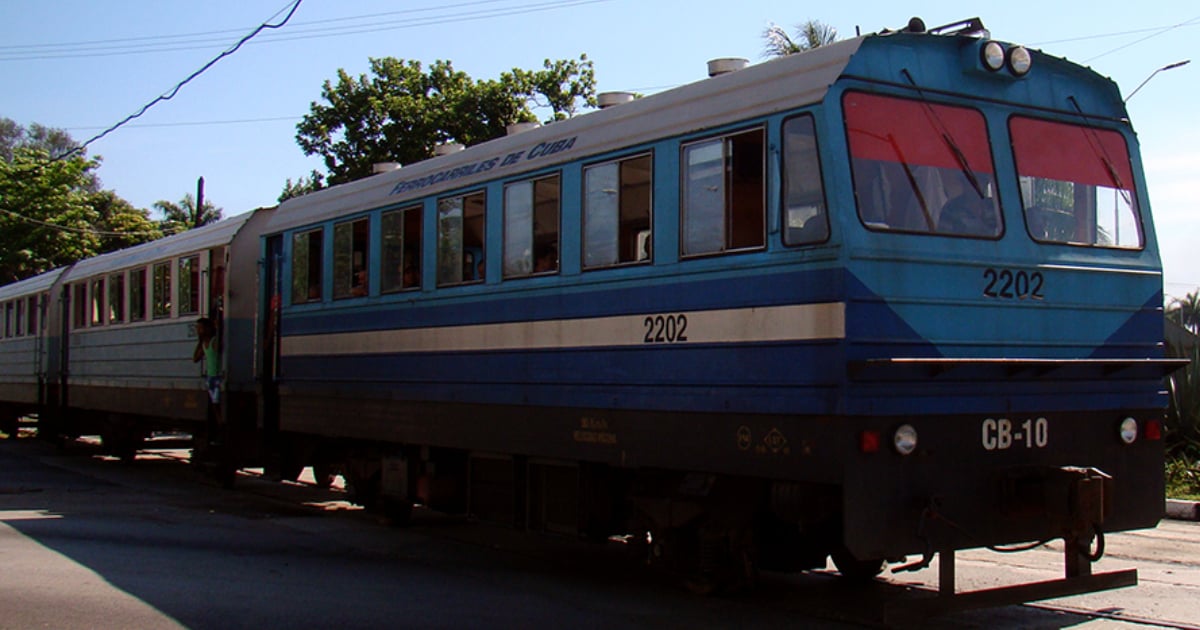Havana's traffic came to a standstill on Tuesday due to an unexpected event on the railway line between Diez de Octubre and Arroyo Naranjo: a train ran out of fuel right in the middle of the tracks. This incident obstructed vehicle movement in the Café Colón area and forced public transportation routes to be redirected.
The news was shared by the Facebook page "Transportación Habana TH," which informed users about the unforeseen situation and its impact on the city's mobility. The post stated, "There is an unforeseen issue on the train line between Diez de Octubre and Arroyo Naranjo. A train has run out of fuel, blocking traffic at Café Colón."
In response, transportation authorities were compelled to alter the paths of several bus routes, including the major lines P6, P8, P9, P10, A12, Gacela 17, and Gacela 1. These buses had to be rerouted via San Leonardo to Porvenir to resume their usual routes.
In addition to the buses, the blockage caused a significant traffic jam, affecting both private drivers and freight transportation using that corridor. Numerous social media users expressed their disbelief at the situation, describing it as "surreal" and a "reflection of the collapse of transportation in Cuba."
Some comments highlighted that a train stopping due to a lack of fuel underscores the logistical challenges and supply crisis the nation faces. Erick Hernández remarked, "What is this? It's a mess. We're in a real bind. It's like being in hell." Meanwhile, Ramón Valdés Olivera noted, "Incredible, but true. What we see today, we never imagined."
Ileana Vergara Valdés exclaimed, "Oh my God! Trains departing without enough fuel and getting stranded anywhere and anytime...unprecedented." Delfín Tarajano humorously added, "As long as a plane doesn't run out of fuel in the air, everything is fixable."
Andy Rodríguez, identified on Facebook as a UEB Terminal Alamar worker, clarified that "it wasn't due to fuel; it was a locomotive failure, nothing to do with fuel."
Remarkably, this incident is not the sole indicator of Cuba's economic crisis. Less than three years after its grand reopening, the Cienfuegos railway station recently shut down again, this time due to the risk of collapse. This revelation by the official media Cinco de Septiembre outraged the residents of Cienfuegos, who see it as another sign of inefficient resource management and fragile public infrastructure on the island.
Earlier this year, the children's train, a popular attraction among Santa Clara families, was repurposed into a public transportation vehicle for the local community. This change was made in response to the severe mobility crisis caused by fuel shortages and the deteriorating state of the nation's vehicle fleet. The small train, which used to operate solely in Vidal Park and its surroundings as a recreational activity, now connects peripheral neighborhoods with the city center.
Understanding Cuba's Transport Challenges
What caused the train to stop in Havana?
The train reportedly halted due to running out of fuel, though some claim it was a locomotive failure.
How did the train incident impact traffic in Havana?
The incident caused significant traffic disruptions, leading to the redirection of several bus routes and affecting private and freight transportation.
What does this incident reveal about Cuba's infrastructure?
The event highlights the logistical challenges and economic difficulties Cuba faces, emphasizing the fragile state of its public infrastructure.
